There is no single best way to bait a swim. If you look any successful carp angler, the key to mximising your chances is to be adaptable. This means that you are likley to need to change your approach and tactics depending venue, stock, conditions and a whole lot of other factors that all go towards determining the most effective strategy for any given situation. There are lots of different baiting tactics to employ and each has their day.
Spread baiting – the big fish anglers’ favourite
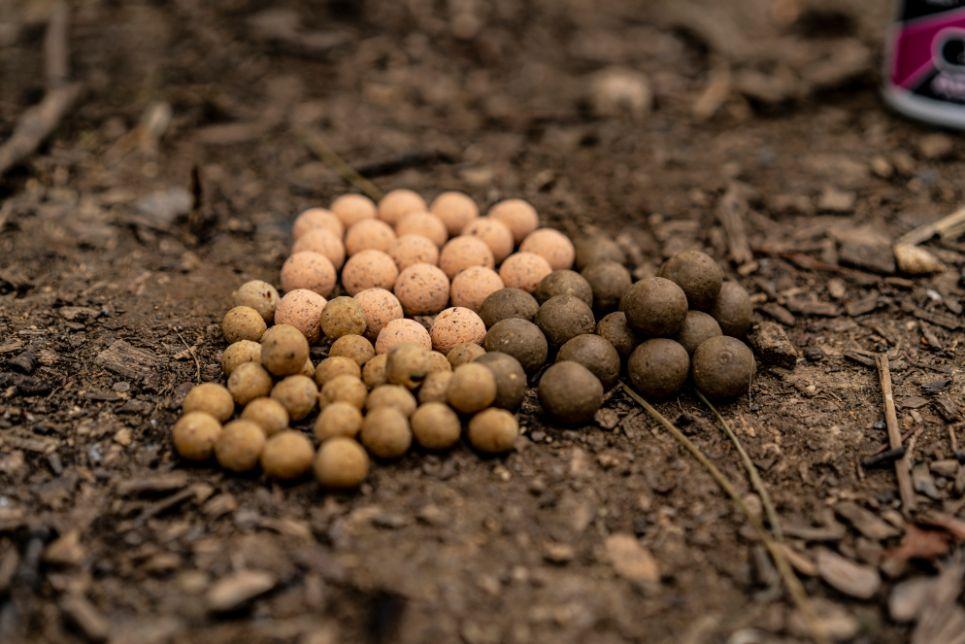
Of course. Let’s start with the big fish anglers’ favourite baiting tactic – spread baiting. Suited mostly to boilie fishing the tactic involves spreading the freebies over a substantial area. The throwing stick is the main tool for the job.
Slight variances in wind strength/direction, throwing action, boilie shape, size and weight all affect consistency to naturally create a wide baited area, upon which one or more rigs can be deployed. The baiting pattern encourages fish to move between mouthfuls making them easier to fool and enables the use of more efficient and blatant presentations, such as high pop-ups.
As there should be few or no free baits in close proximity to the hook bait there is nothing to compare the rogue one to and it won’t appear to behave differently. Various amounts of boilie can be utilised with this baiting tactic from just a dozen baits to several kilos and the spread from about the size of your front room to that of a tennis court. As the feeding area isn’t concentrated several hook ups might be achieved before the fish become spooked making the strategy capable of producing numbers of carp but it’s also well suited for targeting smaller groups.
Spomb out a tight bed of bait
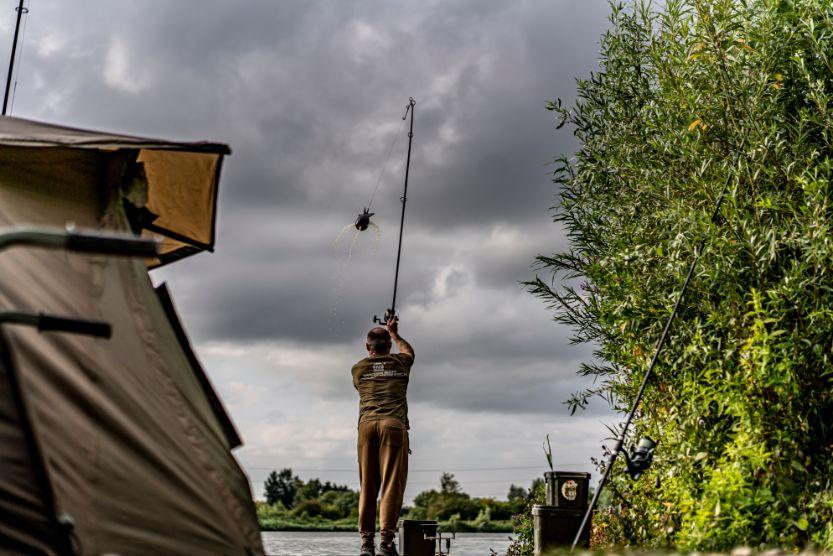
If a big hit is on the cards a more classic baiting tactic would be the tightly spodded area. It’s a favourite of carp match anglers and can initiate sustained, competitive feeding. Large amounts of bait are spombed onto a small spot and three rods cast within feet of each other.
This quantity of bait in a dense area creates an intense feeding zone with carp competing against one another and likely to trip up. They can often be so tuned into the food source, usually containing a high proportion of tiny food items such as seeds and pellets, that the disturbance of a capture goes unnoticed.
Bottom baits and subtle, low lying pop-ups are most suited so as not appear alien against the background feed. It’s an all or nothing method as all your eggs are in one basket, so choose your spot wisely.
Fish single hookbaits
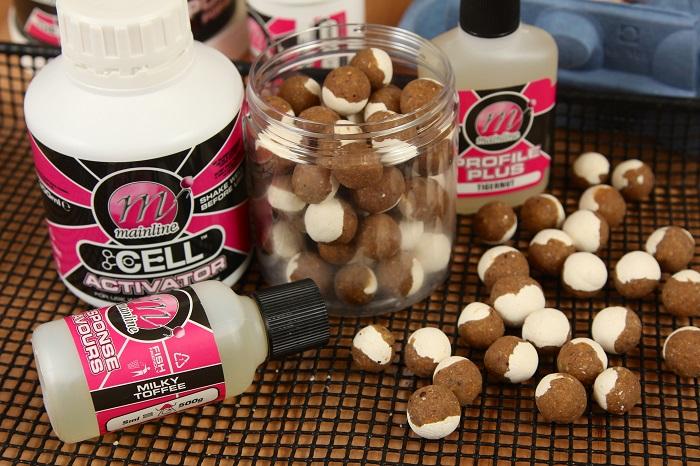
So does lots of bait usually mean catching lots of fish? Not always. In certain scenarios the polar opposite, a single hook bait, is more effective. Early spring fishing, when carp are just becoming active, is prime time for singles and using no free bait whatsoever can be just the way to tempt a bite.
This baiting tactic relies on getting your location absolutely spot on as there are no freebies to encourage carp into the swim to feed. If you encounter carp bubbling on naturals it is often best not to use any bait other than the one with a sting in its tail. It’s impossible for us to compete with nature’s bounty but a little, bright pop-up might induce an instinctive bite from a hungry carp that grabs it before one of his companions does.
When fishing holidays lakes in France piling the bait in at the start of the session may also not be way to go. If you have not spoken with the departing anglers you may have no idea how much bait is already laying on the lake bed. Fishing the first day with singles is a good way to start off and a smart baiting tactic
. If you get a take or two, then you can top your swim up with some bait.
What about PVA bags?
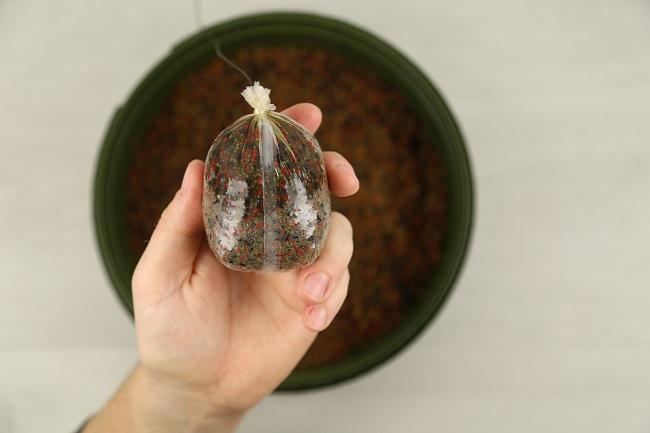
Fishing with PVA bags is a similar strategy to single hook baits but with a little taster of bait injected into the package. The theory here is that the small parcel of bait attracts the attention of a carp, which sucks at the contents and ingests the delicately balanced hook bait.
Like singles the baiting strategy is ideal for when fish aren’t really in the mood for a big feed up. They’re also the perfect way to bait when you are angling for odd fish as they don’t rely on creating a competitive feeding scenario. They’re just the thing for spring or for when you can’t get onto the bulk of the fish
Can you build the swim up with PVA bags?
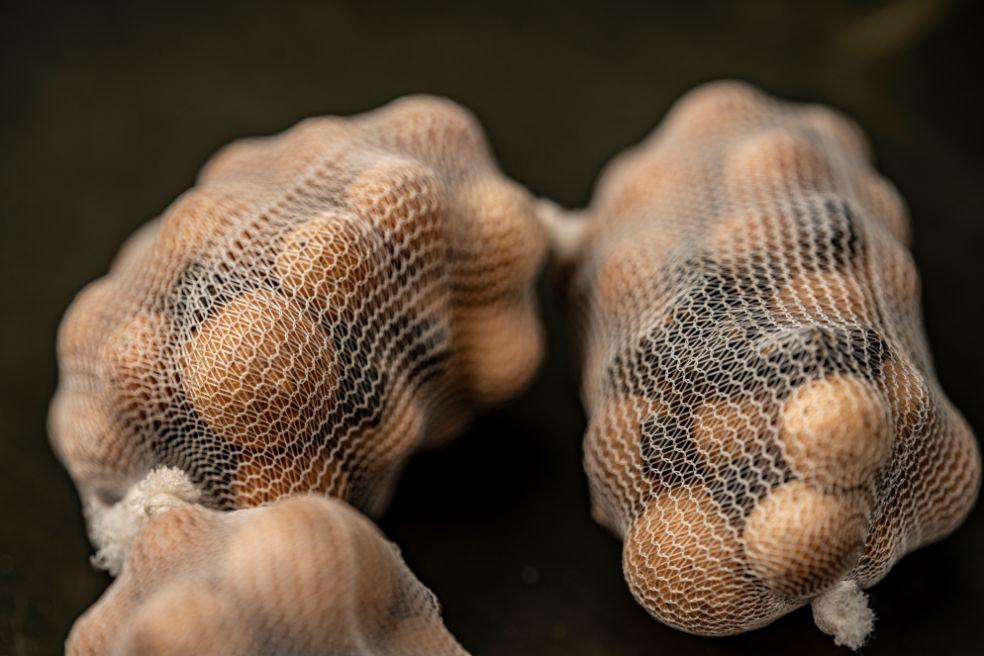
Indeed you can. Regular recasting will see a gradual increase in the amount of bait present, intensifying feeding activity. Coarse match anglers bait in this fashion building a swim up to its maximum potential.
PVA bags are just one way to achieve this though and generally the little and often approach is conducted with half a dozen boilies in a catapult, a few swipes of the throwing stick or a cast of the spod rod every ten minutes or so. This is a superb baiting strategy to use on short sessions. The angler might have to wait for the swim to settle and fish to return following the disturbance of introducing a big hit of bait, however, by topping up with small amounts on a regular basis, there is minimal disruption.
If fish are feeding they can be persuaded to do so for a prolonged period as there is always some bait in the swim although, with only a scattering present at any one time, the chances of one picking up the hook bait remain high. Very few anglers employ this style of baiting, preferring to set the traps and kick back and is, subsequently, something most carp are unfamiliar with.
That sounds a bit different. I bet that’s good for fishing in the edge?
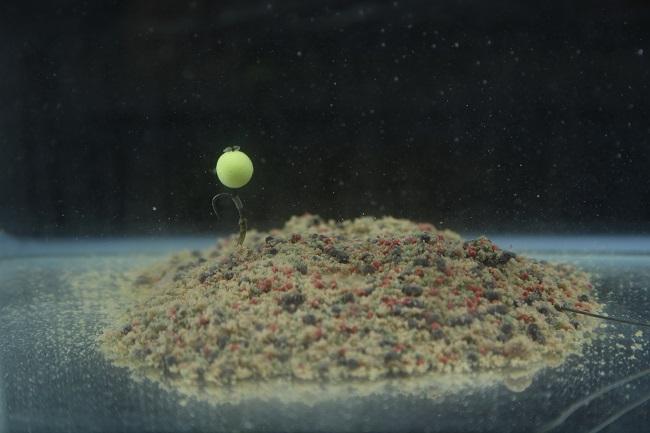
Yes it is as the minimal disturbance will lessen the chance of spooking cautious margin dwellers. Big piles of bait, especially large baits such as boilies, can be the kiss of death in the edge and a little and often approach with a few chops, tigers, corn or pellet can be a winner.
Another fine marginal baiting strategy is the small trap. A little gravel patch or clean spot is tightly baited with just a small amount of feed. Two to four handfuls of bits and pieces is usually about right but this will depend on the situation and numbers of fish.
Err on the side of caution though as this strategy is designed to fish for a bite at a time. They’ll rarely be in large numbers whilst close in and you don’t want to over face them. Too much bait will make things easy for the carp by lowering the chance of the hook bait being taken. Subtle bottom bait rigs are the order of the day as they’ll be hoovering up tiny morsels from the lake bed and a pop-up might be a tad obvious.
So is it all about picking the right strategy?
Pretty much. It’s a rare day that only one approach will work and it’s often a case of baiting in a manner that best suits the venue, the carp, the conditions and the scenario as well as your own style. Rather than baiting in the same manner all the time, giving some thought to your baiting approach and being flexible in the way you introduce freebies will help you maintain consistency and maximise your opportunities.